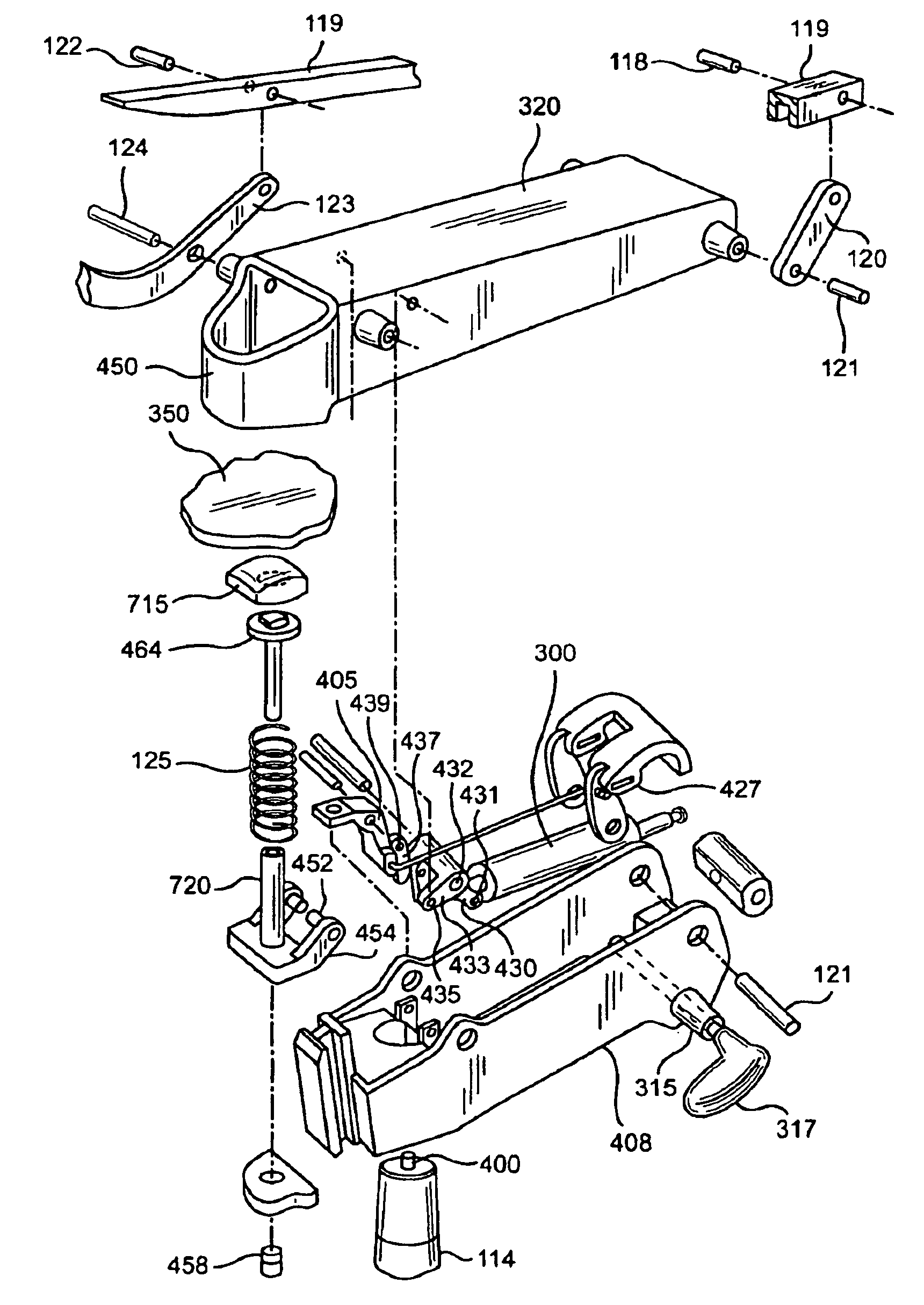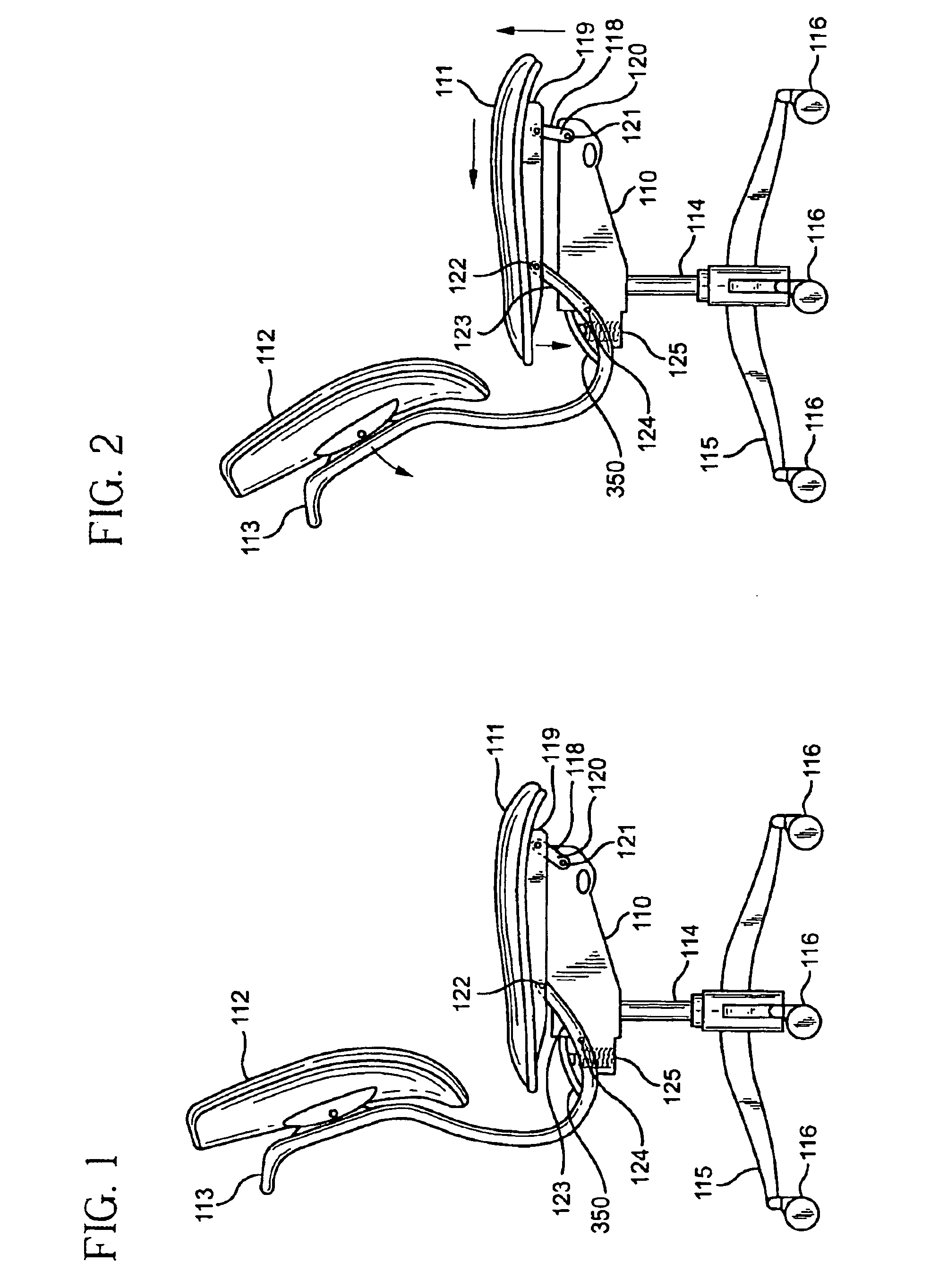Ergonomic chair
a chair and ergonomic technology, applied in the field of ergonomic chairs, can solve the problems of user eye level dropping undetectedly, shirt tail pulling, and particularly acute problems, and achieve the effect of simple and economical construction and high production
- Summary
- Abstract
- Description
- Claims
- Application Information
AI Technical Summary
Benefits of technology
Problems solved by technology
Method used
Image
Examples
Embodiment Construction
[0093] The present invention comprises several developments that can be incorporated singly, or in any combination, into conventional chair designs. For example, the method and mechanism of the present invention for reclining the back of a chair can be used alone, or it could be used with the method and mechanism of the adjustable armrest, the method and mechanism of the adjustable headrest and / or the method and mechanism of the tilt mechanism. FIG. 34 illustrates a chair that incorporates several aspects of the present invention into a chair design specifically including the method and mechanism of the present invention for reclining the back of a chair, the method and mechanism of the adjustable armrest, the method and mechanism of the adjustable headrest and the method and mechanism of the tilt mechanism.
[0094] To understand how the present invention operates, the several separate inventive aspects are described separately. To start with, the method and mechanism for reclining t...
PUM
 Login to View More
Login to View More Abstract
Description
Claims
Application Information
 Login to View More
Login to View More - R&D
- Intellectual Property
- Life Sciences
- Materials
- Tech Scout
- Unparalleled Data Quality
- Higher Quality Content
- 60% Fewer Hallucinations
Browse by: Latest US Patents, China's latest patents, Technical Efficacy Thesaurus, Application Domain, Technology Topic, Popular Technical Reports.
© 2025 PatSnap. All rights reserved.Legal|Privacy policy|Modern Slavery Act Transparency Statement|Sitemap|About US| Contact US: help@patsnap.com



